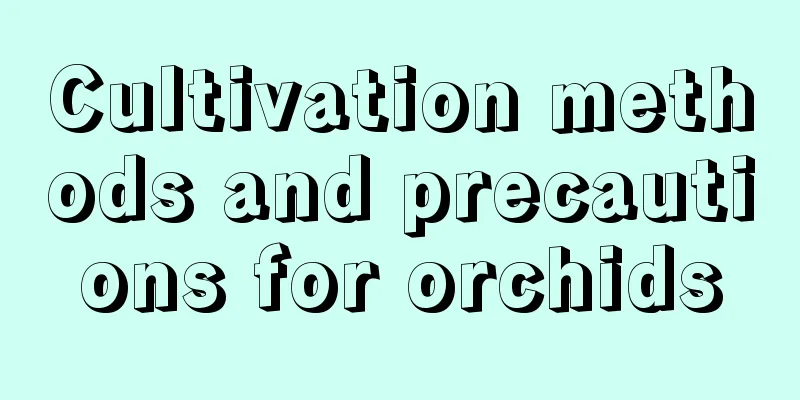Cultivation methods and precautions for orchids

Dormant period maintenanceBecause the temperature is low in winter, it will enter a dormant period early, about sixty days. If it is well maintained during its dormant period, it will grow better after completing the dormant period. First of all, the amount of water must be strictly controlled. Water can only be added when the soil is dry, and it cannot be increased at will. To ensure that the plant can be exposed to light when the temperature is not high during the winter, but avoid exposure to the sun, the potted plant should be kept away from direct sunlight in the afternoon. Potted PlantingBefore carrying out potted cultivation, you must first choose suitable seedlings. Generally, try to choose seedlings with large and thick roots and stems. Plant them in pots around spring and they will bloom two months later. When choosing soil, you should give priority to using a mixture of humus and sand for cultivation. First, spread a layer of fine sand on the bottom of the pot. When cultivating bulbs, just expose the roots a little. During the growth period of the plant, it should be placed in a cool place to avoid direct sunlight. When watering, you should first test whether the soil and the roots of the plants are moist. If they are dry and cracked, water them in time. However, if this is not the case, you do not need to water them. If watering is too frequent, the temperature of the plants will rise, the stems and leaves will grow faster, and flowering will be affected. As for fertilization, top dressing can be applied two to three times in addition to the flowering and growth periods. PrecautionsIt blooms twice a year, so proper management is required before the flowering period begins. When it is growing well, the rhizome will grow rapidly, so you should change the pot to a suitable one at any time. When changing the pot, since the plant has grown for one to two years, the nutrients absorbed from the soil will be insufficient, so you should not only change the pot, but also change the soil to ensure that the plant can absorb nutrients and nutrition normally and grow better. |
<<: How to grow potted Japanese cherry blossoms
>>: How to divide the Avalokitesvara yinensis
Recommend
How to pinch the root of the plant
1. Reasons Pinching should start when the plant i...
When to sow cucumbers in the north
Cucumber sowing time in the north Northern cucumb...
How to plant sweet potato seedlings
The planting depth of sweet potato seedlings has ...
Cultivation methods and precautions of Jilongyue
Moonflower is a succulent that many people like t...
Cultivation methods and precautions of Verbena
1. Loosen the soil Verbena is an easy flower to g...
What are the effects and functions of Dendrobium candidum and what are the taboos
1. Effects and functions of Dendrobium candidum 1...
Where does Job's tears grow? In which regions are they mainly produced?
The growth habit of Job's tears Job's tea...
Strawberry planting and harvesting time
Strawberry planting time Strawberries are usually...
How to cultivate bamboo
1. Maintenance methods 1. Temperature: It likes m...
Cultivation methods and precautions of golden tree
The golden tree is a relatively easy plant to gro...
Can crabapple be planted at the doorstep?
Can crabapple be planted at the doorstep? Begonia...
Can chicken feathers be used as fertilizer?
Chicken feathers as fertilizer Chicken feathers c...
How to water potted strawberries
Key points for watering potted strawberries Potte...
How to grow a whole tank of Moss
1. Temperature When raising moss, you should pay ...
How to trim snapdragon
When to prune snapdragons Snapdragons can be prun...









